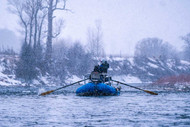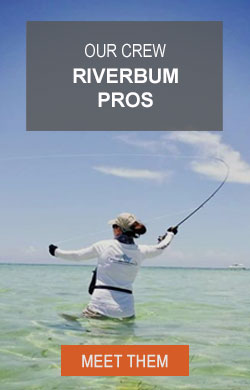Top 7 Flies for Winter Fly Fishing
Winter fly fishing can be a challenging and rewarding experience for anglers. The cold temperatures and shorter days can make it difficult to find and catch fish, but with the right flies, you can still have a successful day on the water.
In this blog post, we will discuss the 7 best flies for winter fly fishing to help you increase your chances of catching fish during the colder months of the year.
The Black and Olive Wooly Bugger
This fly is a great choice for winter fly fishing because it mimics the movement and appearance of small fish and leeches, which are common prey for many types of fish in the winter.
The black and olive coloration also provides a good contrast in the often murky winter water after a good snow storm. The Wooly Bugger can be stripped in slowly or dead drifted below an indicator.
The Midge
Midges are small insects that are active all year round, including during the winter.
They are a common food source for trout and other species of fish. The Zebra Midge is a great pattern to use in winter, as the black and white coloration mimics the natural midge in the nymph stag.
If you don’t get bites with this fly try adjusting your depth before giving up.
Midges hatch during the warmest part of the day so you can fish this pattern deep on the bottom early on and then suspend it higher in the water column as temperature rise and so do the fish! If you see raising fish feeding on the surface – thrown on a small (#20 or #22) Griffith’s Gnat.
Nothing is better than dry fly fishing in the dead of winter!
The Egg Pattern
The egg pattern is a versatile fly that can be used almost half the year in the rocky mountain region. It obviously mimics the eggs of various fish species depending on the color. White or chartreuse are my go to colors in the winter.
Scuds and Sow Bugs
Scuds and Sow bugs mimic small freshwater shrimp and other small crustaceans found throughout the world. They are a common food source for many fish species in the winter.
The Amber and Olive colors are great patterns to use.
Remember to stay darker in the colder months.
Jigged Pheasant Tail
This jigged nymph is a type of fly that is designed to mimic the movement and appearance of a stonefly nymph or larva. This is a great fly to use in the winter as it gets down fast and deep.
Smaller the better – think no larger than an 18 and again go with darker colors (black) and a little flash if the water is a tinted.
The San Juan Worm
The San Juan Worm is a popular fly that is designed to mimic the worm, a common food source for many fish species in the winter.
It is a great fly to use when targeting fish that are after or during a winter snow that has produce run-off flowing heavily into the river. I like dark red and brown in the color months.
Zonker
Beadhead and flashy as well as light or white in color. Let’s face it, tail water is always flowing in the colder winter months when most free stones are frozen solid. This fly imitates small bait fish that may get flushed through the dam. Tail water is warmer so the larger trout will still aggressively pursue a high calorie meal.
Bottom Line
The winter can be a great time to go fly fishing if you have the right flies.
The 7 flies discussed in this blog post are some of the best options to use in the winter and are sure to increase your chances of catching fish on your next winter fly fishing trip.
It's important to remember that the most important factor in fly fishing is often matching the fly to the natural prey that the fish are currently feeding on. Therefore, it's a good idea to have a variety of fly colors and patterns in your fly box and to be familiar with the local fish species and their food preferences.
Good luck and tight lines!







